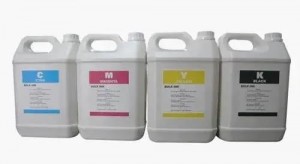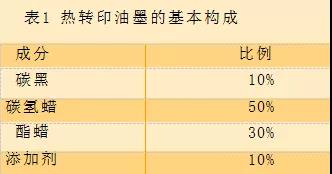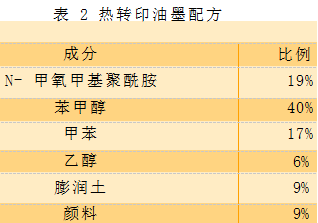Introduction: Thermal transfer process, a common process in the surface treatment of cosmetic packaging materials, because it is easy to print, and the color and pattern can be customized. It is a process that brand owners prefer. The following is edited by RB PACKAGE. Let’s share some common quality problems and solutions as well as the influencing factors of thermal transfer, for your reference in the supply chain of Youpin:
Heat transfer
Thermal transfer process refers to the transfer paper coated with pigments or dyes as a medium, through heating, pressurizing and other methods to transfer the pattern pattern of the ink layer on the medium to a printing method. The basic principle of thermal transfer is to directly contact the ink-coated medium with the substrate. Through the heating and pressurization of the thermal print head and the impression cylinder, the ink on the medium will melt and transfer to the substrate to obtain the desired Of the printed matter.
01 Influencing factors of thermal transfer
1) Thermal printing head
The thermal print head is mainly composed of a surface adhesive film protective layer, a bottom adhesive film protective layer and heating elements. The heating element is a conductive silk screen. With the help of the heat generated by the voltage pulse, the coarse particles of the ink layer of the graphic part are embossed and melted to complete the ink transfer.
The printing speed of thermal transfer depends on the time required for each line of graphics and text. Therefore, the thermal transfer head and the transfer paper should have good heat transfer, so that the heat generated by the heating element can quickly pass through the protective layer, the transfer paper substrate and the gap and finally to the surface of the substrate to ensure that the ink has Sufficient transfer time.
2) Ink
The composition of thermal transfer ink is generally three parts: pigment (pigment or dye), wax and oil, among which wax is the main component of thermal transfer ink. The basic composition of general thermal transfer ink can refer to Table 1.
Table 2 is an example of a screen printing heat transfer ink formulation. N-methoxymethyl polyamide is dissolved in benzyl alcohol, toluene, ethanol and other solvents, heat-resistant pigments and bentonite are added for stirring, and then ground into Screen printing inks. The ink is printed on a carrier (such as thermal transfer paper) using a screen printing method, and then the fabric is thermally pressed and transferred.
When printing, the viscosity of different inks is directly related to the heating temperature, and the heating temperature and the viscosity of the ink should be strictly controlled. Practice has proved that when the heating temperature is 60~100 ℃, when the ink is melted, the viscosity value of the ink is stable at about 0.6 Pa·s, which is the most ideal. Generally speaking, the closer the ink is to this state, the better the transfer performance.
In recent years, with the improvement of shanghai rainbow package technology, the storage temperature of printed products has been increased from the original 45 ℃ to 60 ℃, which has greatly expanded the application range of thermal transfer. In addition, the use of transparent pigments or transparent dyes provides a good hue effect for color prints.
3) Transfer media
Different substrates have different properties, so when choosing transfer paper, you should pay attention to the following reference factors of the substrate.
①Physical performance
The physical properties of the transfer paper are shown in Table 3.
The above are the physical properties of the three thermal transfer paper substrates. The following three aspects can be considered when choosing:
The thickness of the substrate should generally not be greater than 20 μm;
The substrate should have a high degree of smoothness to ensure the transfer rate of the ink;
The substrate must have sufficient strength to ensure that it will not be torn during transfer paper processing and printing.
②Chemical properties
Good and even ink adhesion are two important manifestations of the chemical properties of the transfer paper substrate. In production, the chemical properties of transfer paper directly affect the quality of printing. If the transfer paper cannot make the ink adhere well, or the amount of ink is not mastered in production, it will cause printing waste. A good printing process and good prints must be based on a good grasp of the chemical properties of the transfer paper.
③Good thermal performance
Since the transfer process is realized by high temperature means, the material of the transfer paper must be able to withstand the influence of the transfer temperature and keep the properties unchanged. Generally speaking, whether the thermal performance of the substrate of thermal transfer paper is good can be reflected by the following factors:
The lower the heat resistance of the heat-resistant substrate, the thinner the thickness, the better the heat transfer, and the better its thermal performance;
Smoothness The smoother the substrate surface, the lower the heat resistance and the better the thermal performance;
The temperature of the heat-resistant thermal print head is generally around 300 ℃, and the substrate must be able to ensure that the main performance does not change at this temperature.
4) Substrate
Substrates with a little rough surface have better print quality, which is a significant feature of thermal transfer. Because the rough surface of the substrate indicates that the substrate has a large surface energy, the ink on the transfer paper can be transferred to the substrate well, and the ideal level and tone can be obtained; but too rough will affect the ink quality Normal transfer is not conducive to the realization of the printing process.
02 Common quality failures
1) A pattern appears on the full version
Phenomenon: Spots and patterns appear on the full page.
Reasons: ink viscosity is too low, squeegee angle is not proper, ink drying temperature is insufficient, static electricity, etc.
Elimination: increase the viscosity, adjust the angle of the scraper, increase the temperature of the oven, and pre-coat the electrostatic agent on the back of the film.
2) Napping
Phenomenon: Comet-like lines appear on one side of the pattern, often appearing on the white ink and on the edge of the pattern.
The main reasons: ink pigment particles are large, the ink is not clean, the viscosity is high, static electricity, etc.
Elimination: filter the ink and remove the squeegee to reduce the concentration; the white ink can be pre-sharpened to electrostatically treat the film, use sharpened chopsticks to scrape between the squeegee and the plate, or add an electrostatic agent.
3) Poor color registration, revealing the bottom
Phenomenon: Group color deviation occurs when several colors are superimposed, especially on the background color.
The main reasons: the machine itself has poor precision and fluctuation; poor plate making; improper expansion and contraction of the background color.
Exclude: use strobe light to register manually; re-make the plate; expand and contract under the influence of the visual effect of the pattern, or no white-off in a small part of the pattern.
4) The ink is not clear
Phenomenon: A mask appears on the printed film.
Reason: The scraper holder is loose; the layout is not clean.
Elimination: re-adjust the scraper and fix the knife holder; clean the printing plate with decontamination powder if necessary; install reverse air supply between the plate and the scraper.
5) The printing color drops off
Phenomenon: Color peeling occurs in the local part of relatively large patterns, especially on the pretreatment film of printed glass and stainless steel.
Reasons: the color layer itself is peeled off when printed on the processed film; static electricity; the color ink layer is thick and insufficiently dried.
Elimination: Increase the temperature of the oven and reduce the speed.
6) Poor fastness during transfer
Phenomenon: The color layer transferred on the substrate is easily pulled off by the tape used for testing.
Reason: improper separation or backing, mainly because the backing does not match the substrate.
Elimination: Re-replace the release adhesive (if necessary, make adjustments); replace the back adhesive that matches the base material.
7) Anti-sticky
Phenomenon: The ink layer peels off during rewinding, and the sound is loud.
Reasons: excessive winding tension, incomplete ink drying, too thick label during inspection, poor indoor temperature and humidity, static electricity, excessive printing speed, etc.
Elimination: Reduce the winding tension, or appropriately reduce the printing speed to make the drying complete, control the indoor temperature and humidity, and pre-coat the electrostatic agent.
8) Drop point
Phenomenon: Irregularly missing fine dots (similar to dots that cannot be printed) appear on the shallow web.
Reason: The ink does not go up.
Elimination: Clean the layout, use an electrostatic suction roller, deepen the dots, adjust the pressure of the squeegee, and appropriately reduce the viscosity of the ink without affecting other conditions.
9) Gold, silver, and pearlescent appear orange peel-like ripples during printing
Phenomenon: Gold, silver, and pearl usually have orange peel-like ripples on a large area.
Reason: The gold, silver, and pearlescent particles are relatively large and cannot be evenly dispersed in the ink tray, resulting in uneven density.
Elimination: Before printing, the ink should be evened, and the ink should be applied to the ink tray with a pump, and a plastic blowing tube should be placed on the ink tray; reduce the printing speed.
10) Poor reproducibility of print levels
Phenomenon: Patterns with too large gradation transition (such as 15%- 100%) often fail to print in the light mesh part, insufficient density in the dark tone part, or obvious junctions in the middle tone part.
Reason: The transition range of the dots is too large, and the ink adhesion to the film is not good.
Elimination: use electrostatic suction roller; divide into two plates.
11) The gloss on the printed matter is light
Phenomenon: The color of the printed product is lighter than the sample, especially when printing silver.
Reason: ink viscosity is too low.
Exclude: adding raw ink to increase ink viscosity to an appropriate amount.
12) The white text has jagged edges
Phenomenon: Jagged edges often appear on the edges of texts that require high whiteness.
Reasons: the particles and pigments of the ink are not fine enough; the viscosity of the ink is low, etc.
Exclude: sharpen the knife or add additives; adjust the angle of the squeegee; increase the viscosity of the ink; change the electro-engraving plate to a laser plate.
13) Uneven coating of pre-coating film of stainless steel (silicone coating)
The pretreatment of the film (silicon coating) is usually carried out before printing the stainless steel transfer film, so that the problem of unclean peeling of the ink layer during the transfer process can be solved (the ink layer is on the film when the temperature is above 145°C). Difficulty in peeling).
The above are the physical properties of the three thermal transfer paper substrates. The following three aspects can be considered when choosing:
The thickness of the substrate should generally not be greater than 20 μm;
The substrate should have a high degree of smoothness to ensure the transfer rate of the ink;
The substrate must have sufficient strength to ensure that it will not be torn during transfer paper processing and printing.
②Chemical properties
Good and even ink adhesion are two important manifestations of the chemical properties of the transfer paper substrate. In production, the chemical properties of transfer paper directly affect the quality of printing. If the transfer paper cannot make the ink adhere well, or the amount of ink is not mastered in production, it will cause printing waste. A good printing process and good prints must be based on a good grasp of the chemical properties of the transfer paper.
③Good thermal performance
Since the transfer process is realized by high temperature means, the material of the transfer paper must be able to withstand the influence of the transfer temperature and keep the properties unchanged. Generally speaking, whether the thermal performance of the substrate of thermal transfer paper is good can be reflected by the following factors:
The lower the heat resistance of the heat-resistant substrate, the thinner the thickness, the better the heat transfer, and the better its thermal performance;
Smoothness The smoother the substrate surface, the lower the heat resistance and the better the thermal performance;
The temperature of the heat-resistant thermal print head is generally around 300 ℃, and the substrate must be able to ensure that the main performance does not change at this temperature.
Phenomenon: There are stripes, filaments, etc. on the film.
Reason: Insufficient temperature (insufficient decomposition of silicon), improper proportion of solvents.
Exclude: Increase the temperature of the oven to a fixed height.
Shanghai Rainbow Industrial Co., Ltd is the manufacturer, Shanghai rainbow package Provide one-stop cosmetic packaging.If you like our products, you can contact us,
Website: www.rainbow-pkg.com
Email: Bobby@rainbow-pkg.com
WhatsApp: +008613818823743
Post time: Oct-25-2021






